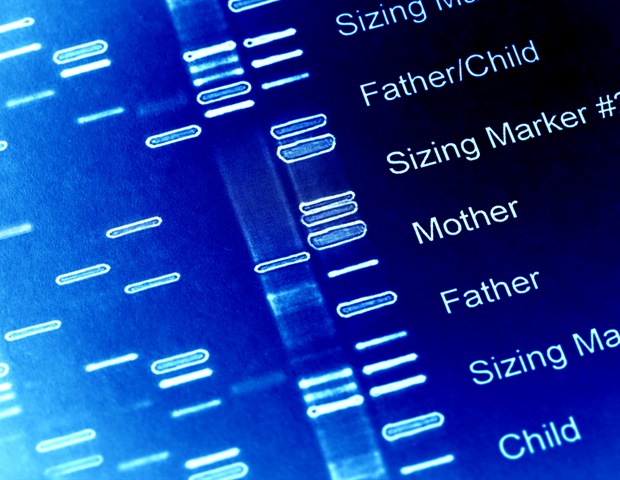The most important genetic examine of its type, coordinated by the Worldwide League In opposition to Epilepsy, together with scientists from FutureNeuro at RCSI College of Medication and Well being Sciences, has found particular modifications in our DNA that enhance the chance of growing epilepsy.
The analysis, revealed at present in Nature Genetics, vastly advances our data of why epilepsy develops and will inform the event of latest remedies for the situation.
Epilepsy, a standard mind dysfunction of which there are a lot of differing kinds, is understood to have genetic part and to typically run in households. Right here, researchers in contrast the DNA from numerous teams of just about 30,000 individuals with epilepsy to the DNA of 52,500 individuals with out epilepsy. The variations highlighted areas of our DNA that could be concerned within the growth of epilepsy.
The researchers recognized 26 distinct areas in our DNA that look like concerned in epilepsy. This included 19 that are particular to a specific type of epilepsy referred to as ‘genetic generalized epilepsy’ (GGE). They had been additionally capable of level to 29 genes which might be in all probability contributing to epilepsy inside these DNA areas.
The scientists discovered that the genetic image was fairly totally different when evaluating distinct sorts of epilepsy, particularly, when ‘focal’ and ‘generalized’ epilepsies had been in contrast. The outcomes additionally recommended that proteins that carry electrical impulse throughout the gaps between neurons in our mind make up among the threat for generalized types of epilepsy.
Gaining a greater understanding of the genetic underpinnings of epilepsy is essential to growing new therapeutic choices and consequently a greater high quality of life for the over 50 million individuals globally dwelling with epilepsy.”
Professor Gianpiero Cavalleri, Professor of Human Genetics at RCSI Faculty of Pharmacy and Biomolecular Science and Deputy Director of the SFI FutureNeuro Analysis Centre
“The discoveries we report on right here may solely be achieved by means of worldwide collaboration, on a world scale. We’re happy with how the worldwide group of scientists working to raised perceive the genetics of the epilepsies have pooled sources and collaborated successfully, for the advantage of individuals impacted the situation” commented Professor Cavalleri.
The researchers additionally confirmed that lots of the present drugs for epilepsy work by concentrating on the identical epilepsy threat genes that had been highlighted on this examine. Nonetheless, primarily based on their knowledge, the researchers had been capable of suggest some doubtlessly efficient various medication. These will must be clinically examined to be used in epilepsy as they’re usually used for different situations, however they’re recognized to focus on among the different epilepsy threat genes uncovered.
“This identification of epilepsy-associated genetic modifications will permit us to enhance analysis and classification of various epilepsy subtypes. This in flip, will information clinicians in choosing essentially the most useful remedy methods, minimizing seizures” stated Professor Colin Doherty, Guide Neurologist, St James’s Hospital, Co-author and Medical Investigator on the SFI FutureNeuro Centre.
Over 150 researchers, primarily based throughout Europe, Australia, Asia, South America and North America, carried out the analysis. They labored collectively as a part of the Worldwide League In opposition to Epilepsy (ILAE) Consortium on Advanced Epilepsies. The ILAE Consortium was fashioned by researchers in 2010, recognizing that the complexity of genetic and environmental elements underlying epilepsy would require analysis throughout huge datasets, and subsequently unprecedented collaboration on a world scale.
“Enterprise such a complete examine is a exceptional achievement that RCSI and Futureneuro are proud to have performed a number one function in. The problem now could be to translate the findings of this analysis to enhance the lives of individuals with epilepsy” concluded Professor Cavalleri.
“With this examine, we have now bookmarked elements of our genome that ought to be the key focus of future epilepsy analysis. It would type the idea for additional work wanting on the molecular pathways concerned in seizure era, neuronal dysfunction and altered mind exercise” stated Professor Samuel Berkovic, College of Melbourne.
“This can be a main milestone for the ILAE Consortium on Advanced Epilepsies, demonstrating what might be achieved when scientists brazenly collaborate and share knowledge from the world over. The outputs are wide-reaching and relevant to epilepsy sufferers globally.” stated Professor Helen Cross, President of the Worldwide League In opposition to Epilepsy.
Science Basis Eire (SFI) supported the work by means of their funding of the Futureneuro Analysis Centre.
Supply:
Journal reference:
Stevelink, R., et al. (2023). GWAS meta-analysis of over 29,000 individuals with epilepsy identifies 26 threat loci and subtype-specific genetic structure. Nature Genetics. .
